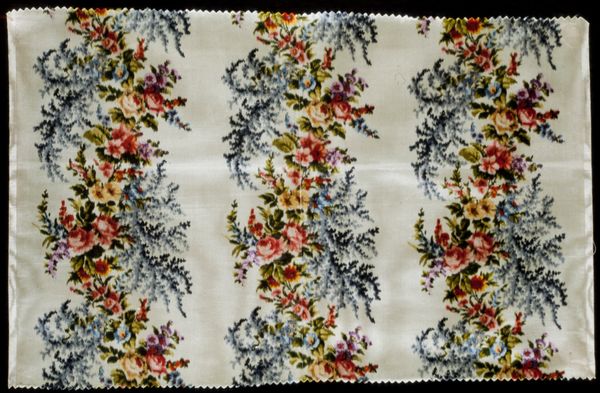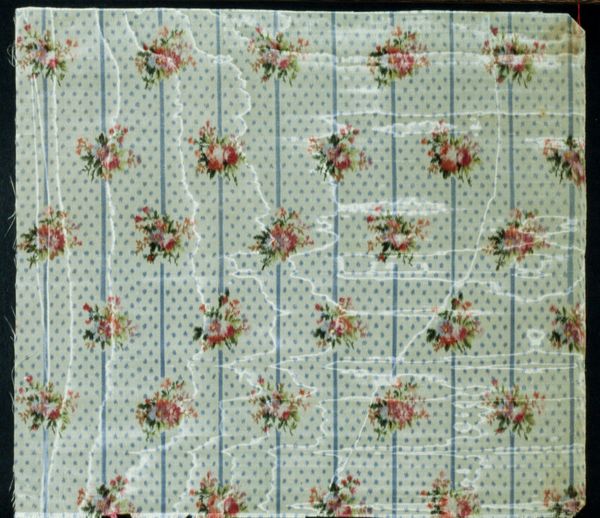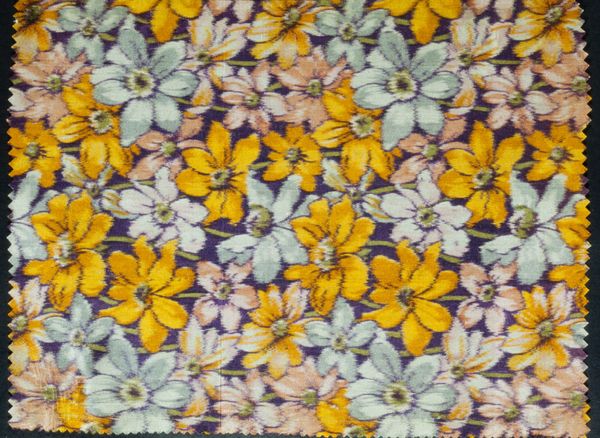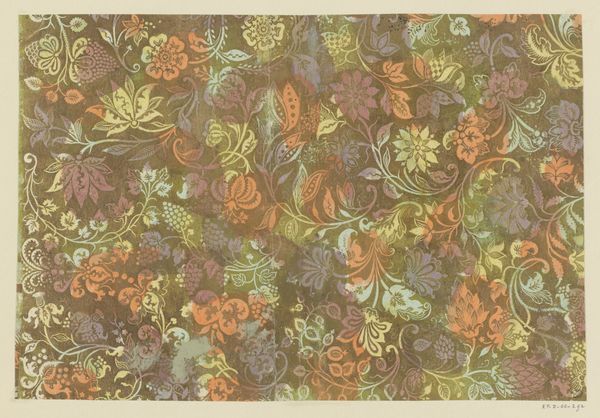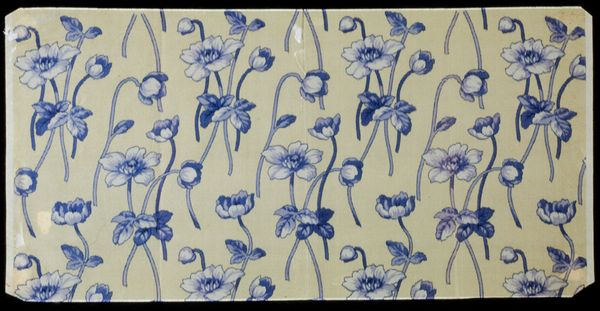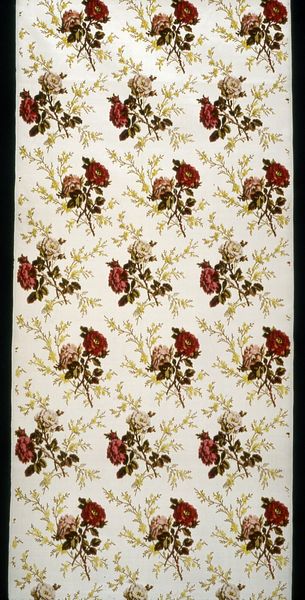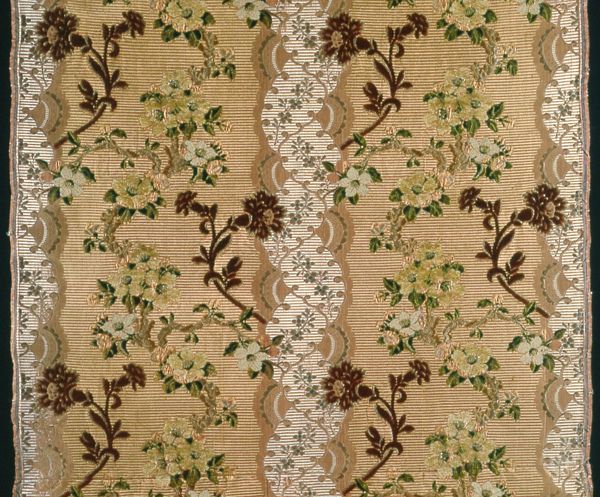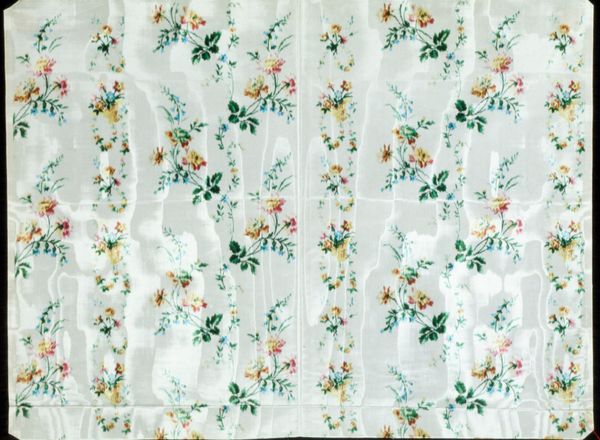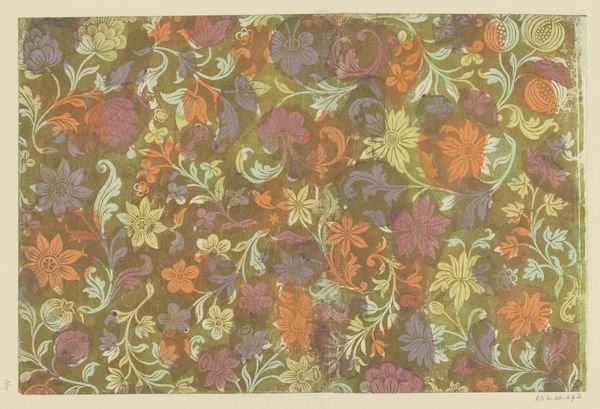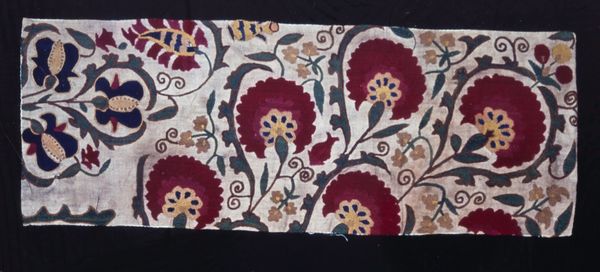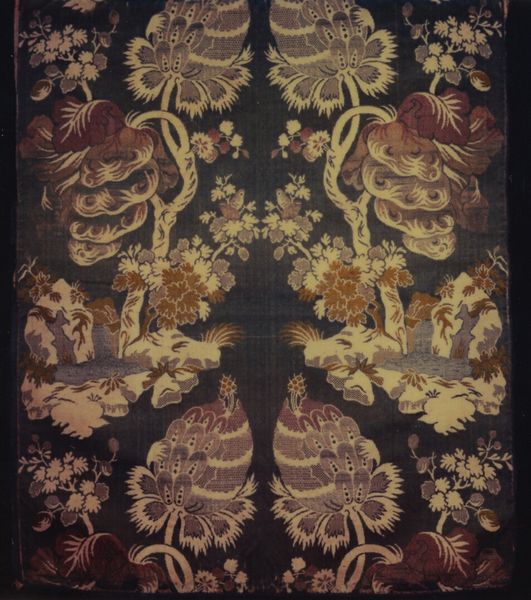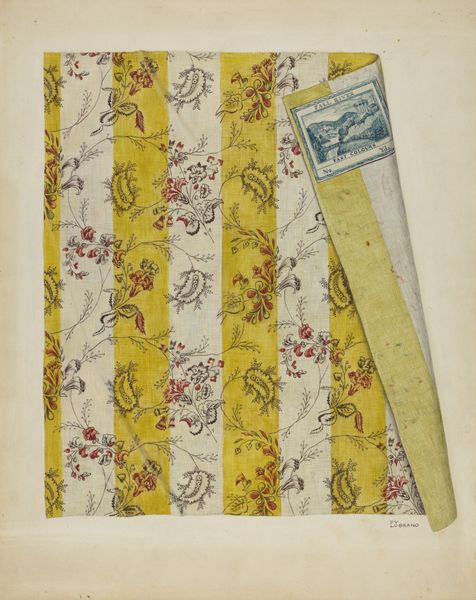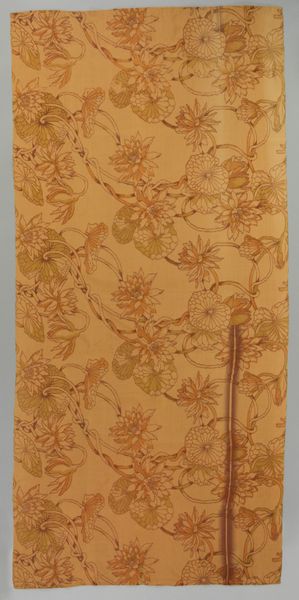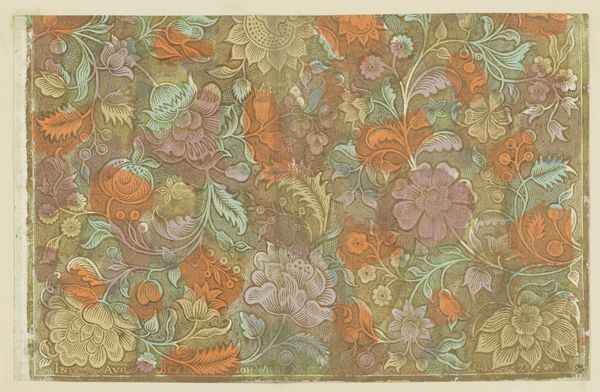
textile
#
textile
Dimensions: 17 1/4 x 14 1/2 in. (43.82 x 36.83 cm)
Copyright: Public Domain
Editor: Here we have a piece of silk textile from the late 19th century, known as a "Chiné piece." I find the repetition of the tulip motif over the pastel stripes oddly comforting. What jumps out at you when you look at this work? Curator: What immediately captures my attention is the intended function of the textile itself. Considering the period, late 19th century, and given that it's a silk textile, how might this have played a role in shaping the perception of its owner and their status? Editor: That's a great point. So, the textile’s visual appeal is only part of its value – it also operates as a marker of class and maybe even cultural awareness? Curator: Exactly! The very acquisition and display of such textiles within a domestic space would have functioned as a performance, speaking volumes about the collector's financial means and aesthetic inclinations. Editor: Looking closer, I wonder about the appeal of the tulip. Was there something particularly fashionable or symbolic about the flower itself that made it such a prominent motif? Curator: Ah, a perceptive question. The tulip had a remarkable journey through cultural history, with episodes like "tulip mania" in the 17th century imbuing it with layers of symbolic weight tied to commerce, luxury, and the transience of beauty. Editor: That makes perfect sense. So, understanding the history surrounding a seemingly simple fabric reveals so much about the values of the time! Curator: Indeed! Thinking about art in this way allows us to recognize the narratives and power dynamics embedded in even the most decorative objects. It challenges us to consider what values we assign to particular artworks or artifacts today and why.
Comments
No comments
Be the first to comment and join the conversation on the ultimate creative platform.
